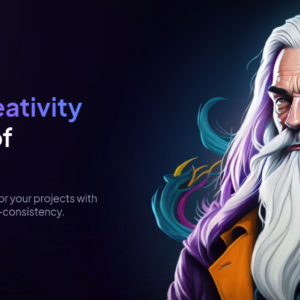Augmented Reality (AR) and Virtual Reality (VR) are rapidly growing technologies that are transforming the way we interact with the world around us. AR and VR are changing the face of various industries, including education, healthcare, gaming, and entertainment. These technologies offer immersive experiences that allow users to interact with a digital environment in a natural and intuitive way. However, these technologies can be further enhanced with the integration of AI tools like ChatGPT.
ChatGPT is an AI tool that is based on the GPT-3.5 architecture, and it has been trained on a vast corpus of text. It is capable of generating human-like responses to text-based prompts. With the integration of ChatGPT, AR and VR can be taken to the next level, providing a more personalized and intelligent experience to users. In this blog, we will discuss how AR and VR can get benefited by ChatGPT or AI tools.
Personalization
One of the significant benefits of integrating ChatGPT into AR and VR is personalization. ChatGPT can analyze user data, such as browsing history, search queries, and social media interactions, to provide a more personalized experience. For example, in a shopping application that uses AR, ChatGPT can suggest personalized product recommendations based on a user’s preferences and previous purchases.
Natural Language Processing
Natural Language Processing (NLP) is a subfield of AI that focuses on the interaction between computers and humans in natural language. ChatGPT is a powerful NLP tool that can understand and respond to human language. In AR and VR, this can be used to create more realistic and immersive experiences. For example, in a virtual classroom, ChatGPT can answer students’ questions and provide personalized feedback based on their responses.
Real-Time Translation
AR and VR technologies can be used to bring people from different parts of the world together. However, language barriers can still be a significant hindrance to communication. ChatGPT can be used to provide real-time translation in AR and VR environments. This can make it easier for people to communicate with each other and overcome language barriers.
Predictive Analytics
Predictive Analytics is the process of using data, statistical algorithms, and machine learning techniques to identify the likelihood of future outcomes based on historical data. ChatGPT can be used to analyze user data and provide predictive insights. For example, in a healthcare application that uses AR, ChatGPT can analyze a user’s health data and provide personalized recommendations for improving their health.
Intelligent Assistance
ChatGPT can be used to create intelligent assistants in AR and VR applications. These assistants can help users perform tasks more efficiently and provide personalized recommendations. For example, in a home design application that uses AR, ChatGPT can provide users with personalized recommendations for furniture and decor based on their preferences.
Image Recognition
AR and VR applications often rely on image recognition to detect and track objects in the real world. ChatGPT can be used to enhance image recognition by analyzing user data and providing personalized recommendations based on detected objects. For example, in a fashion application that uses AR, ChatGPT can recognize clothing items and suggest complementary accessories based on a user’s style preferences.
Emotional Recognition
Emotional recognition is a subset of AI that focuses on identifying and analyzing human emotions. ChatGPT can be used to enhance emotional recognition in AR and VR environments. For example, in a virtual therapy session, ChatGPT can analyze a user’s facial expressions and tone of voice to provide personalized feedback and support.
Machine Learning
Machine Learning (ML) is a subset of AI that focuses on building algorithms that can learn from data and improve over time. ChatGPT can be used to enhance ML in AR and VR applications. For example, in a gaming application that uses VR, ChatGPT can analyze user behavior and adjust the difficulty level of the game accordingly.
Predictive Maintenance
Predictive maintenance is a process that uses data analysis to predict when equipment is likely to fail. ChatGPT can be used to enhance predictive maintenance in AR and VR environments. For example, in a manufacturing application that uses AR, ChatGPT can analyze equipment data and provide predictive insights to reduce downtime and increase efficiency.
In conclusion, the synergy of AI and AR/VR has the potential to revolutionize various industries by providing personalized, intelligent, and immersive experiences. With the integration of AI tools like ChatGPT, AR and VR can be further enhanced, providing more significant benefits to users and businesses alike. From image recognition to fraud detection, the possibilities of AI in AR and VR are limitless.




